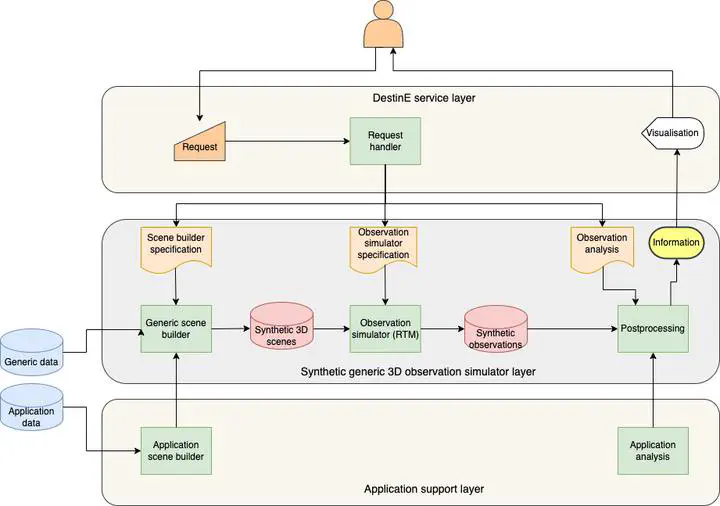DTE-S2GOS overall design

A possible overall architecture of the synthetic scene generator service is shown in the above figure. The initial service design is based on the technical requirements and constraints and the service specifications as outlined above. The design is composed of three main layers:
- A low-level application support layer containing the processing specific to supported applications (Use Case);
- A generic layer responsible for the generation of (1D/3D) synthetic observation simulations. This layer is composed of three main modules:
- A module (Generic Scene Builder) responsible for assembling the (1D/3D) scenes from the scene builder specifications. The outcome is the geometrical and radiative description of the scene characteristics in a format that can be understood by the Observation Simulator. This module can rely on modules dedicated to support specific applications.
- An Observation Simulator, typically a 1D or 3D radiative transfer model, capable of simulating space- or ground-based observations in the specific spectral region. It should be stressed that it is not expected that these RTMs rely on modules from the Application layer to perform observation simulations.
- A post-processing module, responsible for the extraction and formatting of the simulated data following user’s requests. Uncertainty estimation is also performed in this module.
- A service layer responsible for the interface with the DestinE Platform infrastructure and functionalities.
During the first year of the project, only the first two layers (application and generic), will be used for the preparation of the synthetic scene generator, prior to its implementation into the DestinE Platform. Data management will be designed to smooth the transition between the local demonstrator and the DestinE Platform.